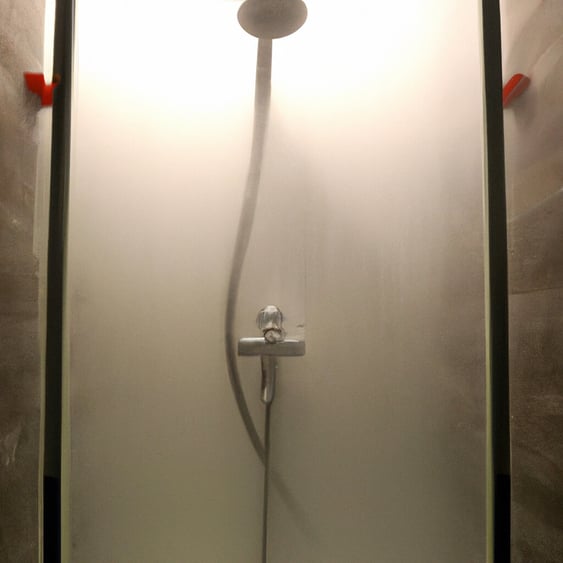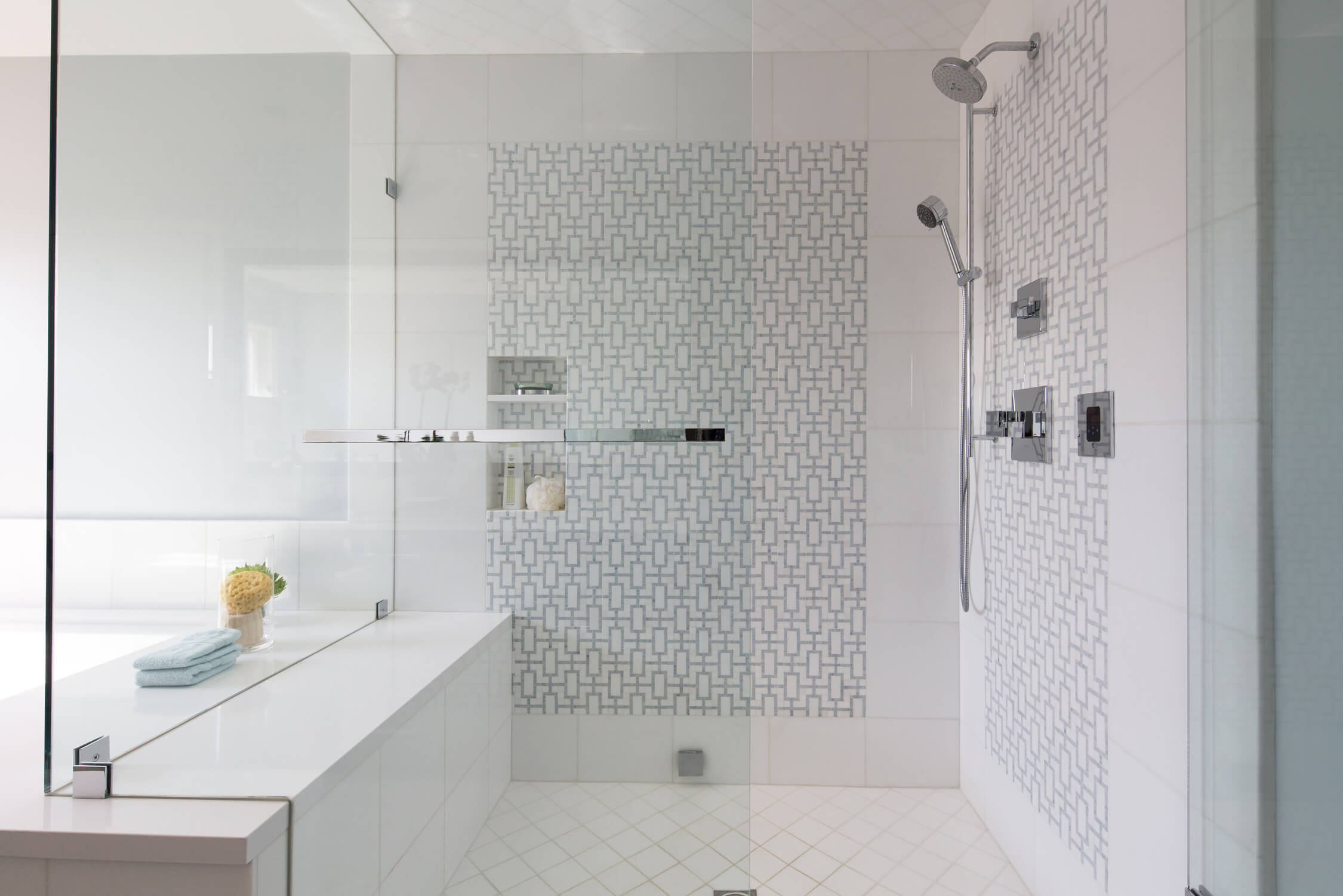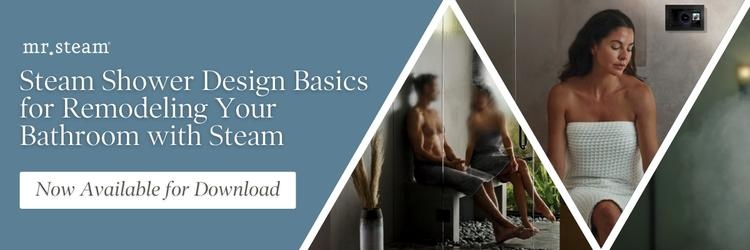Steam Showers vs. Regular Showers: A Remodeling Opportunity
Congratulations! You are ready to embark on your dream bathroom renovation. It's an exciting time, and you will have many decisions to make. A threshold question is whether to install a traditional shower or engage in your long-held dream of installing a steam shower. Or perhaps you will decide on something in-between.
Below is an in-depth comparison of traditional and steam showers' features and differences. Explore which shower type may offer you the most benefits regarding your health goals, the overall project price, and the various features included in each shower.
What is a steam shower?
A steam shower or bath consists of a fully tiled, enclosed space. The steam shower includes a steam generator system that heats water to the point it becomes a vapor. It then releases the hot water vapor into the enclosed space through a steamhead.
Steam showers may help you:
- Reduce stress,
- Breathe easier,
- Increase blood circulation,
- Relax muscles, and reduce joint stiffness,
- Have skin with that healthy glow.

How do Steam Showers Work?
At its heart, a steam shower consists of three standard components:
- Steam generator
- Steam controls
- Steamhead
The steam generator can be as small as the size of a briefcase and has a simple job. It boils the water. You may install it in any dry area up to 60 feet away from the shower room with 12 inches of space around three sides.
The steamhead releases steam into the shower room. You install this device about a foot above the floor and away from the main seating area.
The steam controls help you manage your steam shower session, including temperature settings and steam therapies including AromaTherapy, ChromaTherapy, and MusicTherapy.
What're the differences between traditional showers and steam showers?
Steam showers produce steam by heating water to create a humid environment, while regular showers release water for rinsing and cleaning. Other differences include:
-
Purpose: Steam showers are primarily designed to provide relaxation, detoxification, and therapeutic benefits through steam inhalation. Regular showers are mainly for hygiene, allowing users to wash and rinse their bodies.
-
Design and Construction: Steam showers are typically enclosed and sealed to prevent steam from escaping, ensuring the unit remains filled with steam during use. Regular showers don't need to be fully enclosed and can have open sections or gaps.
-
Duration: A steam shower session usually lasts around 15-20 minutes, after which users might take a cool shower to rinse off sweat. Regular showers can be as brief or as long as the user prefers, depending on their cleaning routine.
-
Temperature and Humidity: Steam showers operate at lower temperatures than saunas, usually between 110°F and 120°F, but with 100% humidity. Regular showers can vary in temperature based on user preference but do not achieve the same moisture level.
What are the Benefits of Steam Showers vs. Regular Showers
The following briefly compares the various benefits of traditional showers versus steam showers.
Health Benefits
While hot, traditional showers share many of the same health benefits as steam showers, steam showers have the advantage that comes from the moist, high-humidity conditions they produce. To name just a few uses, a steam shower promotes wellness in the areas of:
- Respiratory relief,
- Sweat detoxification, and
- Skincare absorption.
>> 40 Benefits of Steam Showers
Eco-Friendliness
Traditional showers use 2 to 2.5 gallons of water every minute, depending on the type of showerhead you employ. That means a 20-minute shower takes 50 gallons of water.
Compare that to steam showers that only use up to 2.5 gallons of water for the same 20-minute shower.
That means each steam session costs approximately one dollar.
Maintenance of Traditional Showers vs. Steam Showers
Both steam shower and regular shower enclosure surfaces and fixtures need to be kept clean to prevent mold and mildew.
A traditional showerhead may also need regular cleaning by periodically removing mineral deposits from the showerhead. This task is easily done by soaking the showerhead in a vinegar solution or by using a specialized cleaner.
>> 3 Top Tips for Steam Shower Maintenance
Steam showers have a few more maintenance requirements, but they can largely be automated.
For example:
- Flushing of the generator. You can automate steam shower cleaning by installing an AutoFlush system. AutoFlush flushes the generator of sediment two hours after every steam shower. The flush happens automatically through an electronic valve.
- Add a water softener to prevent hard water- Hard water refers to the concentration of mineral deposits in the incoming water. The mineral deposits from hard water cause scale to accumulate over time, reducing the life of your steam bath generator.
If you have Autoflush and water softener, the steam shower generator only needs to be cleaned once every few years.
Accessories
While your steam shower may retain the accessories from your regular shower, there are several steam shower accessories that you cannot transfer to a traditional shower. Those special steam shower accessories include:
- "AromaTherapy" may enhance your mood instantly;
- "MusicTherapy" may soothe your soul with your favorite music, meditations, or the sounds of nature; and
- "ChromaTherapy" may change your mood with different colors.
.jpg?width=1845&height=1040&name=blog.mrsteam.comhubfsFor%20MrSteam%20Promo%20Emails%20(2).jpg)
What Is the Cost of a Steam Shower vs. a Regular Shower?
If your home remodeling includes a new shower, the price difference between a regular shower and a steam shower may pleasantly surprise you.
For example, if you have a small shower space, a custom-built steam shower package costs as little as $1,550 plus installation. That's on par with the cost of many regular showers.
Larger showers require more shower enclosure material and larger generators, raising the price.
The size of the steam shower room determines how much material you need and how much time the project will take. A larger cubic foot area will also require a larger generator.
For instance, a 71 cubic foot room will cost around $2,175 with Steam@Home. You must also consider the porous materials, such as natural stone you plan to use in your steam shower.
Porous materials add 50% to the cubic feet portion of your project. These materials require a larger generator. This is in contrast to non-porous materials like acrylic tile.
Cost Comparison: Remodel With and Without Steam Shower
To remodel a traditional shower into a steam shower 5'6"w x3'6"l x 8' high, you will need the following:
- 30% more tile at a cost for materials, installation, and waterproofing of $420;
- New glass shower door to reach the ceiling and seal the room with installation for $400;
- Professional labor costs for plumbing, electrical, and shower installation for $1,000;
- New steam accessories and system features for $4,775;
- Total estimated cost: $6,595.00.
Compare the costs for the project above, to another project remodeling a traditional shower:
- Without a steam shower: $24,000.
- With a steam shower: $30,595 ($24,000 + $6,595.00)
The additional cost invested in a steam shower is only 25% over the traditional shower cost.

How Much to add a Steam Shower to your regular shower?
Instead of choosing between traditional and steam showers, why not have both? You can easily convert your current shower to add steam.
Factors that affect installation costs include:
- The size of the shower room affects the size of generator needed;
- Materials used in the installation;
- The sophistication of the shower controls; and
- Additional therapies added (AromaTherapy, ChromaTherapy, MusicTherapy).
>> How to Estimate the Price of Installing a Steam Shower in Your Home
The MrSteam VirtualSpa system helps you figure out how much the steam shower costs for your particular project in four easy steps.
- Input into the VirtualSpa system the size of your shower room and the type of material used for the installation.
- Add in the types of controls you desire.
- Add the types of therapies you desire.
- Add the types of accessories you want.
Then, add 25%-35% for materials and labor, and Voilà! You know how much your project will cost.

 SEARCH
SEARCH
 FIND A DEALER
FIND A DEALER







